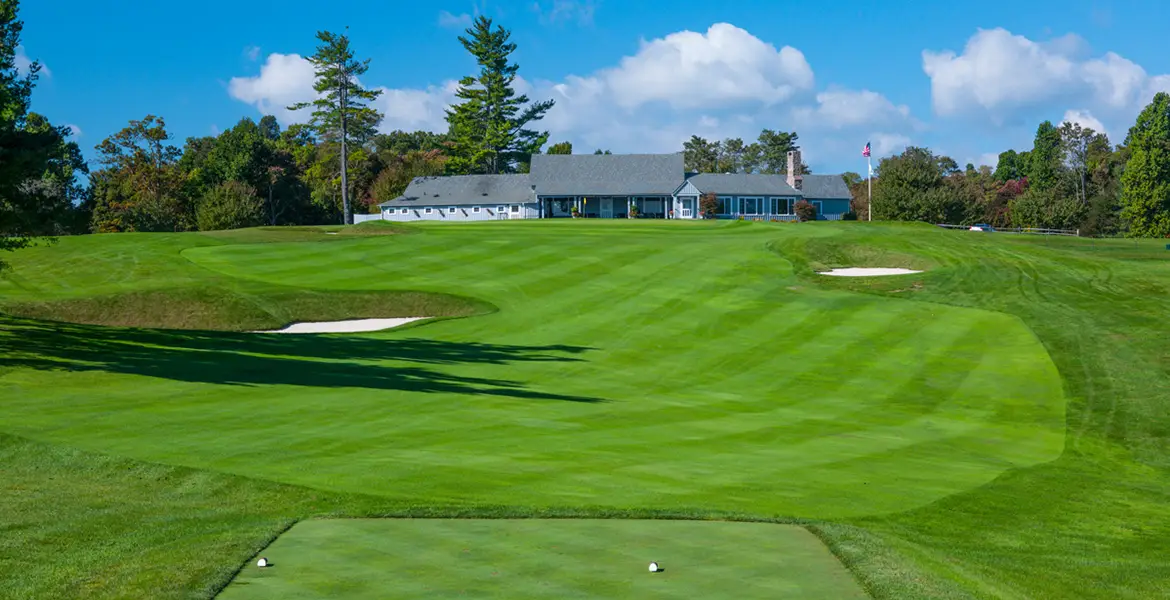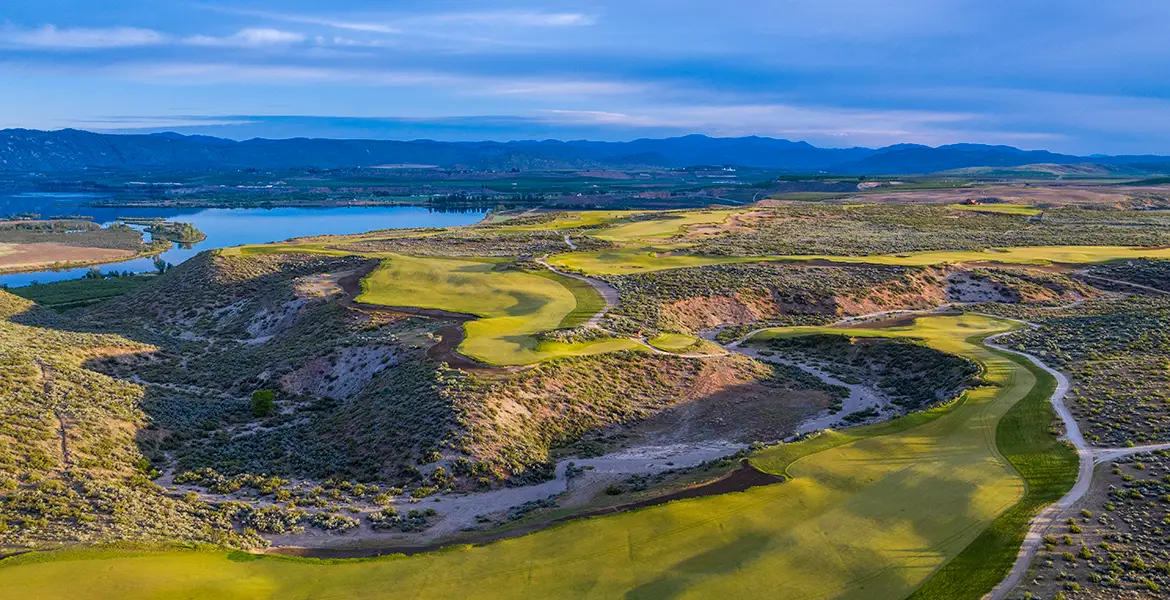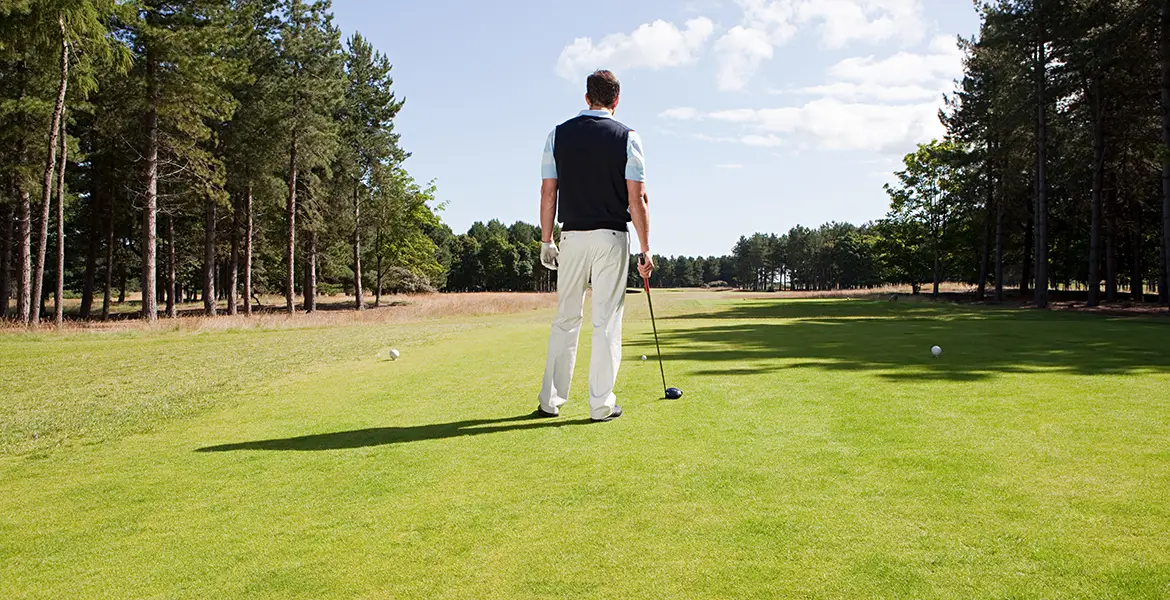Entering August, Tony Shuster had caddied for 20 days in a row at Bandon Dunes Golf Resort. He totaled 847,000 steps during the month of June and another 789,000 in July—upward of 800 miles in all.
Shuster is one of almost 350 caddies shepherding golfers around the six 18-hole courses at the remote, walking-only destination along the Oregon coast, which has the biggest caddie corps in the nation. While the veteran looper estimates the percentage of guests taking caddies is about 10 percent less than normal at Bandon Dunes since its mid-May reopening, business has still been brisk even if it’s a bit modified—from no rakes, pulling pins, and foam inserts in the cup to a slight uptick in forecaddies or group caddies who typically don’t carry bags.

But while golf has been booming (every state in the continental U.S. had a healthy year-over-year jump in the number of rounds played in June, for example), some caddie programs remain shut down or scaled back. In the initial stages of the coronavirus outbreak, a host of organizing golf bodies, at both the state and national level, recommended a complete restriction on the use of caddies. Interestingly, some parts of the country today report an increase in caddie use.
Still, questions remain whether caddying should be a part of golf—particularly below the professional level—as the pandemic rages on.
“It’s our job to safely guide our golfers from the first hole to the 18th hole,” says Shuster. “If that job has to do with the pandemic, like everything in today’s world, that’s something we can do safely and do every day. I don’t see any reason for caddies to be cut out. You need service people, no different than a waiter at a restaurant. Bandon Dunes is essentially its own bubble—its own windy bubble.”

Guidelines have emerged, whether its golf resorts like Bandon Dunes or dedicated organizations like CaddieNow, which offers a platform that manages caddie programs for facilities and helps more than 100 courses nationwide pair golfers with caddies.
For CaddieNow, that includes asking caddies to practice safe physical distancing, use a towel to handle a player’s clubs or golf balls, and provide hand sanitizer. The comfort level of the player or caddie determines whether a mask will be worn during the round.
“The adoption of these rules is the new normal and caddies are quick to do it,” says CaddieNow Senior Marketing Manager Chuck Beasley. “It’s been interesting. A few months ago, the very first thing you think is they’ll never use caddies again. But the courses that have had these programs, they want to make sure they remain.”
CaddieNow’s same-course caddie rounds are up 20 percent on average year-over-year.
If that trajectory seems surprising, consider that walking the golf course has emerged as more of a popular option given distancing concerns, a desire to get in some safe exercise outdoors, and limited cart availability in some areas because of restrictions that allow only one rider per cart. And the recruiting of caddies has improved with the availability of college and high school students, who have limited extracurricular activities and added schedule flexibility due to online classes.
That dynamic has been a positive for Caddie U, a Minnesota non-profit that not only trains youngsters as caddies and runs tournaments, but also offers innovative programming such as teaching financial literacy to high school students. The organization promotes a group caddie model that’s been enthusiastically adopted by a host of clubs, including Interlachen Country Club in Edina, Minn., where Bobby Jones won the 1930 U.S. Open.

Unlike traditional bag-on-the-shoulder caddies, group caddies don’t carry golf bags and, for safety purposes, don’t run ahead like forecaddies to see where tee shots land. They still help with finding golf balls, replacing divots and ball marks, cleaning clubs, raking bunkers, tending flagsticks (where permitted), and keeping score for outings with a mobile app.
“If you want a qualified caddie to carry the bag, we want that to happen too,” says Caddie U founder Mark Haugejorde. “But we think we’re opening things up. In the next year or two, we’re going to see our first Evans Scholars who have never carried a bag.”
That might be a head-scratcher for some. Evans scholarships—more than 1,000 last year—are awarded to caddies with limited financial means. But as the coronavirus prompts changes in many industries, Haugejorde sees opportunity for permanent shifts in caddying. Part of that opportunity involves diversifying the caddie ranks.
Caddie U has partnered with the Sanneh Foundation, which supports 7,000 youth of color in the Twin Cities area. Not only does this involve training and placement, but participants are given a set of clubs to better help them learn the game, and transportation is provided through donations that pay for Uber rides.
As many as half of all group caddie rounds in Minnesota will be made possible this year by Caddie U, which plans to expand the model to areas like Detroit, Washington D.C., Ohio, and South Florida.
“I’ll ask our kids, ‘What business is the caddie business?’” says Haugejord. “They’ll usually say golf. I tell them it’s actually hospitality. That sticks with them. I tell them, ‘You’re here to help others. If you learn hospitality well, it will serve you well anywhere in life.’”
As for myself, I’ve had only positive caddie experiences over the past few months, accompanied by both experienced caddies and relative newcomers. I was equally appreciative of the sage counsel of a seasoned looper in Bandon, the guidance of a longtime local at a course in southern New Jersey, and the eager engagement of a young man several times at a North Jersey club. It enhanced the overall experience, yes, but most importantly, it felt safe.
As Shuster noted, even when he carries a golf bag and tends to equipment, he’s grabbing the part of the clubs where players hit the ball (the clubhead) and handing them the part they hold (the grip).
“Every single time I get to that first hole, I’m excited to be there,” says Shuster. “The pandemic hasn’t changed that. If anything, it’s amplified it.”
So, what’s your opinion on the role of the caddie during times like these?






